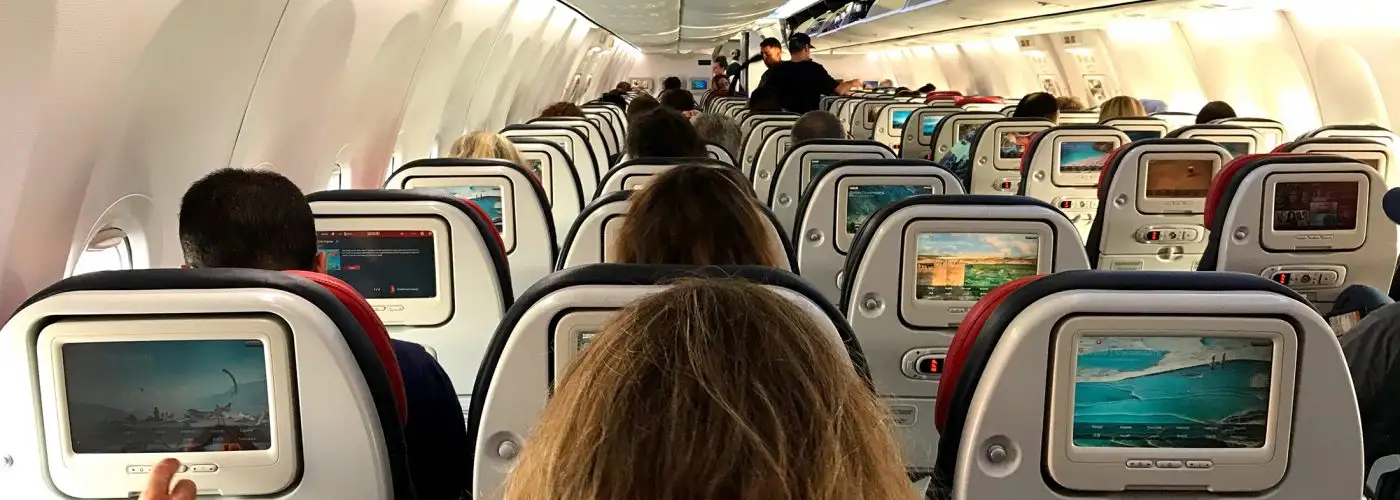The Federal Aviation Administration (FAA) has responded to a court order seeking airline seat size minimums by saying it does not have a responsibility to regulate airline cabins in such a capacity. The court order was brought in response to action by an independent consumerist organization called Flyers Rights, which requested the FAA take on the issue.
This FAA response sidesteps rather than fully addresses the problem, and points to a larger issue when it comes to seat size: safety.
Comfort Is Not the (Only) Issue
In its response, the FAA attempted to deflect the focus on minimal seat size by emphasizing the issue of passenger comfort: The FAA is in the business of safety, not comfort, it says. And that’s true.
Although some of the complaints about tight seating have included the problem of minimum comfort, this is also a safety issue. The FAA rightfully insists that comfort is a matter between airlines and customers, not regulation—but dismissing the comfort issue doesn’t make the safety issue go away.
Skirting Safety
The safety issue is stark: Over the years, air travelers have died in “survivable” accidents, killed not by impact but by their post-impact inability to get out of the airplane quickly enough to avoid being overcome by fire and smoke.
As a result of several accidents, in 1966 the FAA established guidelines for safe airplane evacuation, including rules for the number of emergency exits based on number of seats in each plane, a requirement that all passengers be able to get out of the plane in 90 seconds with half of the emergency exits unusable, and a rule that evacuation tests must be run. Nobody is challenging this basic fact.
Evacuation Data Is Scant
When safety rules were being formulated, aircraft manufacturers ran evacuation tests from mock-up cabins. Those tests are the only actual data available on evacuation times. As far as I know, new evacuation tests have not been run in at least two decades, despite the fact that seats are now packed in far more tightly than when the original tests were run.
Evacuation tests seem to have been discontinued for several reasons:
- Even with controlled tests conducted inside a large hangar, test subjects suffered some serious personal injuries.
- There’s no way a controlled test can simulate the impact of panic or reduced visibility due to smoke without serious risk to test subjects.
- As far as I can tell, no tests can accurately examine the consequences of passengers’ taking their carry-on items when they leave a crashed plane, despite instructions not to do so.
The FAA’s Claims Don’t Check Out
The FAA claims that even today’s ultra-tight seating is safe, but there’s little evidence of that. Although its response to the court included a few old test videos, the FAA presented no evidence to support its claim that passengers in today’s high-density seats can get out quickly enough. At best, the agency has some computer simulations.
And in a bit of misdirection, it noted that a passenger can get out of even a very tight seat in a few seconds—less time than needed to open exit doors and deploy exit slides. But just getting out of a seat, simply by standing up, clearly isn’t the problem. The problem is getting from the seat to an aisle and then to an exit while in a crowd of panicky passengers, many of whom often grab their carry-ons despite instructions not to.
The Issue Isn’t Going Away
Although the FAA declined to pursue seat size minimums, the issue isn’t dead. Flyers Rights said it would probably go back to court, and the Department of Transportation Inspector General is independently taking a look. Congress might also weigh in again.
Nobody knows how the FAA might respond to a second court order. Clearly, it does not want to get involved in establishing minimum seating density rules. It probably will not conduct any additional controlled tests. At best, it could do some more computer modeling. If evidence indicates a safety problem, it could even change the arbitrary 90-second rule to 120 seconds or so.
The current round of inquiry might well end the way so many such issues do: kicked down the road for future study, unless something tragic happens first. Fortunately, the U.S. airline safety record is extremely good: In recent years, Amtrak and commuter railroads have killed far more people than airlines have.
Sooner or later—but most likely later—the FAA might actually do something substantive about the issue. But don’t expect any relief from ultra-tight seats in the main cabin any time soon.
Unless proved unsafe, seats will probably get tighter, not roomier. Meanwhile, as long as the issue remains alive, I’ll try to keep you updated.
More from SmarterTravel:
- The Potential FAA Changes That Could Help (and Hurt) Travelers
- Allegiant Air Safety Issues Have Persisted for Years
- FAA to Consider Legroom Minimum for Coach Seats
Consumer advocate Ed Perkins has been writing about travel for more than three decades. The founding editor of the Consumer Reports Travel Letter, he continues to inform travelers and fight consumer abuses every day at SmarterTravel.
We hand-pick everything we recommend and select items through testing and reviews. Some products are sent to us free of charge with no incentive to offer a favorable review. We offer our unbiased opinions and do not accept compensation to review products. All items are in stock and prices are accurate at the time of publication. If you buy something through our links, we may earn a commission.
Related
Top Fares From
Today's Top Travel Deals
Brought to you by ShermansTravel
Kenya: 14-Night Tour, Incl. Tanzania &...
smarTours
 vacation
$7125+
vacation
$7125+
7-Night Caribbean Round-Trip Cruise From Orlando:...
Norwegian Cruise Line
 cruise
$739+
cruise
$739+
Ohio: Daily Car Rentals from Cincinnati
85OFF.com
 Car Rental
$19+
Car Rental
$19+




